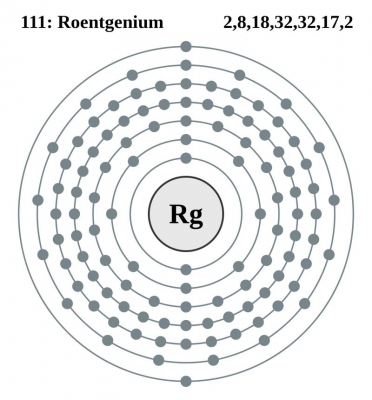
For most of the time when I was at school, a chemistry teacher would walk into our class and say “Uuu”. While the uninitiated ones were often trembling to find out if the “you” meant themselves, for the rest of us it was clear that our teacher was speaking about element 111.
It has now been 25 years since element number 111 in the periodic table, roentgenium, was discovered, during which a few more synthetic elements have been added to the table. For it was on December 8, 1994 that atoms of roentgenium were discovered and detected for the first time.
Bombard bismuth with nickel
As early as 1986, nuclear physicists at the Joint Institute of Nuclear Research at Dubna, Russia, bombard the element bismuth with nickel in the hopes of creating element 111. Alas, it wasn’t to be as they weren’t able to detect any atoms of a new element.
It had to wait another eight years before the discovery was eventually made. The methodology was similar, but the protagonists weren’t. As it was a group of scientists led by German physicists Peter Armbruster and Gottfred Munzenberg at the Gesellschaft fur Schwerionenforschung (GSI Helmholtz Centre for Heavy Ion Research) in Darmstadt, Germany who enjoyed the success. In fact, Armbruster and Munzenberg were involved in the discovery of every element from 107 to 112.
The experiment involved bombarding a target of bismuth with nickel ions in the hope that the nuclei of the two would fuse together to form a bigger atom, once the nickel penetrated the bismuth nucleus. The trick was to carefully control the energy of the collision in order to ensure that fusion did take place.
Getting it right
This was needed because if the nickel ions weren’t fast enough, they would move off bismuth on contact, unable to overcome the repulsion between two positive nuclei. If, however, the nickel had too much energy, then the compound nucleus would just fall apart owing to the excess energy. Considering that most of an atom is empty space, successful collisions weren’t easy.
The scientists observed three successful collisions on December 8, 1994, forming atoms of atomic number 111 and mass 272. The new atoms were identified based on what happened to them when they decayed.
Considering that the atoms formed were very short-lived-what with a half-life of 1.5 milliseconds – it was some effort on the part of the scientists to realise that they underwent successive alpha decay to form atoms of element 109, 107, 105 and 103.
Uuu is for unununium
Even though the discovery was announced in a paper published in 1995 and further experiments conducted in 2000 by the discoveries yielded a few more atoms whose decay chains could be traced up to element 101, element 111 was given only a temporary name. This was because the permanent name had to wait until independent confirmation of its existence was provided.
The temporary name, as dictated by the International Union of Pure and Applied Chemistry (IUPAC), was derived from the atomic number. Element number 111 was therefore called unununium and was given the symbol Uuu (the “Uuu” in the first paragraph now makes sense, doesn’t it?).
A team of scientists at the RIKEN Linear Accelerator facility in Japan were able to make a few atoms of element 111 in 2003, providing the independent confirmation. Those in Darmstadt were given the opportunity to pick a name for the element and they went with roentgenium, honouring Wilhelm Conrad Roentgen, who discovered X-rays in 1895.
Since 2004, when IUPAC officially accepted the name, element number 111 has been roentgenium, with a symbol Rg. In that same year, during the discovery of element 115, scientists identified as isotope of roentgenium in its decay chain, offering scope for studying it further.
With very few atoms of roentgenium ever produced and with its longest-lived isotope known currently having a half-life of a little over 20 seconds, a lot remains unknown yet regarding element 111.
Picture Credit : Google




